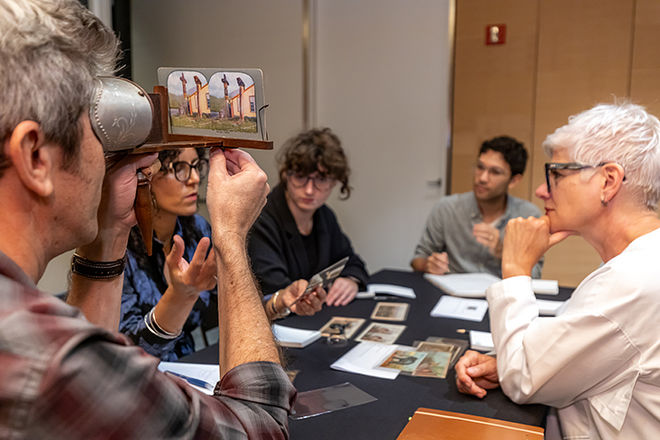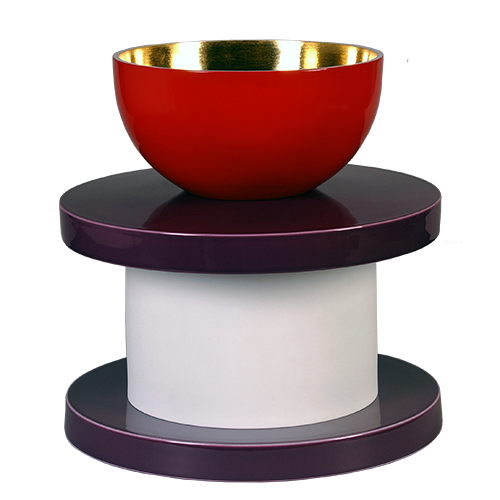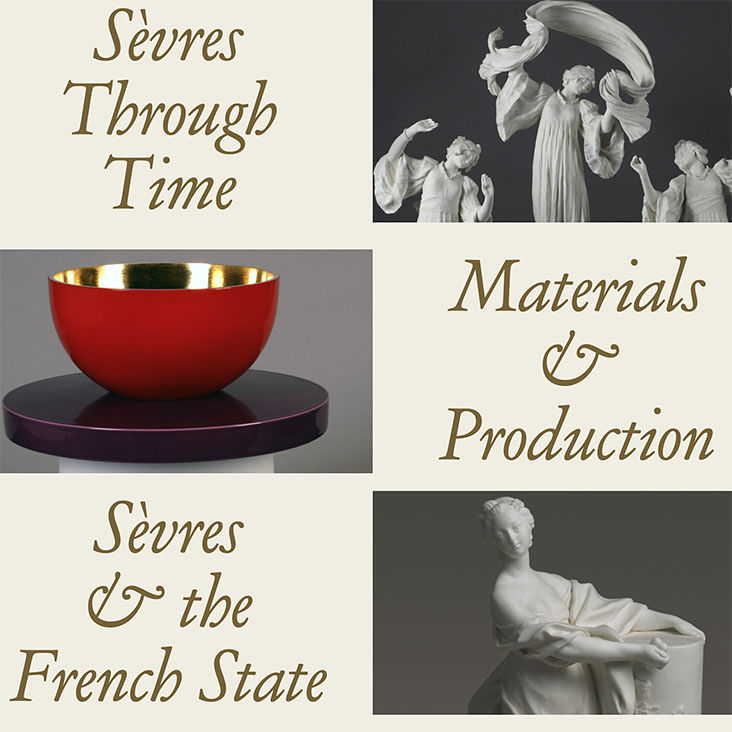From the Exhibition:
Fabricating
Power with Balinese Textiles
This painting is a Balinese
representation of a lunar eclipse, but it is shown in a way that points to
wider cosmic meanings of the event. The depiction is based on the narrative in
the Adiparwa, the first book of the
Indian epic the Mahabharata and is
part of the Balinese adaptation of that story. In a famous scene of the Adiparwa, the gods and demons get
together to churn the World Mountain in the World Sea. Each group goes to a side
of the mountain and ties a rope around it. This rope is the great serpent
Basuki. The churning produces wonderous things, including the amerta, the elixir of life, but one of
the demons, Kala Rahu (Rau), steals it and starts to drink it before the others
can act. Quickly, the god Wisnu (Vishnu) reacts by cutting off Rahu’s head with
his famous discus, the cakra. However,
the elixir reaches Rahu’s neck, so his head remains immortal and flies off into
the sky.
The
moment in which Rahu devours the moon goddess, Dewi Bulan, is depicted here as
the lunar eclipse. Dewi Bulan or Wulan, governs spinning and weaving and is
shown here with her spinning wheel. In addition to the demonic head devouring
the moon, other demonic figures (called buta
and kala in Bali) can be seen
here hovering around as they accompany Rahu. Although originally the two were
separate, in most Balinese traditions, Dewi Bulan is identified with Dewi Ratih, the goddess of love,
who is the spouse of Semara.
This
painting is a recent work from the village of Kamasan, in the Klungkung
regency. This scene is found in both traditional—that is, older works in the
style Balinese call “classic”—and modern art. Traditional art is based on the wayang, or shadow puppet theater, and
the flatness of the figures and stylized nature of the iconography and gestures
are a direct reference to the wayang.
Most depictions in the classic style from the village of Kamasan show the
lead-up to this scene, the conflict of the gods and the beheading of Kala Rahu, because
Kamasan works pay closer attention to the Adiparwa
story.
Gregory Bateson and
Margaret Mead’s associate Colin McPhee collected many works from Kamasan and other
villages, which, through Mead, ended up in the collection of the American
Museum of Natural History in 1952. One of these works,
which is in the style of the region of Gianyar rather than the village of
Kamasan, includes the devouring scene as a continuation of the Adiparwa episode. It shows the churning of
the world ocean at the bottom left and then the conflict of gods and demons,
top left, in which Rahu is beheaded by Wisnu. The focus of that painting is
Rahu attempting to devour the Moon Goddess. Rahu is accompanied by lightning, depicted
as a group of flaming demonic heads, rather than the disjointed figures that
represent demonic forces in the Kamasan work illustrated here.
In contrast to the
classic style, modern images tend to depict the threat to the moon goddess in a
single scene. Well-known examples include a work from the 1970s
by Gusti Ketut Kobot, one of the masters of the central Balinese style
identified with Ubud village. Kobot was continuing the mode of depiction
already popular in the Ubud area in the 1930s, as shown in two almost identical works
by I
Dewa Nyoman Leper, one of the early Ubud artists. These
works were collected by Bateson and Mead. They are distinctive because the
demon’s head breaks through the halo of the moon goddess, and he has his teeth
around her in a depiction that speaks of violent aggression. These works make
the gendered meaning of the painting apparent.
A number of the modern
works also show the impact of the eclipse by depicting dismayed villagers. One
of the first artists to depict the mythological scene in the real world was I
Made Griya of Ubud in a
1932 painting. That work was done at the time that
Ubud was becoming known as a center for the arts. More recent works
show the full nature of the ill-omened event, as villagers attempt to ward off
the harm with performances and ritual acts.
Given that this event
was previously not shown in a single scene, it is likely that the depiction
became popular in Ubud before spreading to other parts of the island in the
1930s. The recent Kamasan work was most likely influenced by the Ubud
paintings.
One clear example of
the spread of the theme from Ubud to other parts of Bali, is a work from the 1940s or 1950s
by I Sukarya, one of the masters of the Sanur school of painting, from the
coastal village in the south. Again, in that work, the moon goddess is almost swallowed
by the demonic head. The image of eating is reminiscent of scenes from other
narratives, notably the Sutasoma, where a demon devours a semi-divine hero but
is defeated by the power of the hero and must regurgitate him, in an act
identified with exorcism or purification, of changing the being (matemahan=metamorphosis) from demonic to
divine.
Adrian Vickers is professor of
Southeast Asian Studies at the University of Sydney. His books include Bali: A Paradise Created (2012) and Balinese Art: Paintings and Drawings
1800–2010 (2012).











